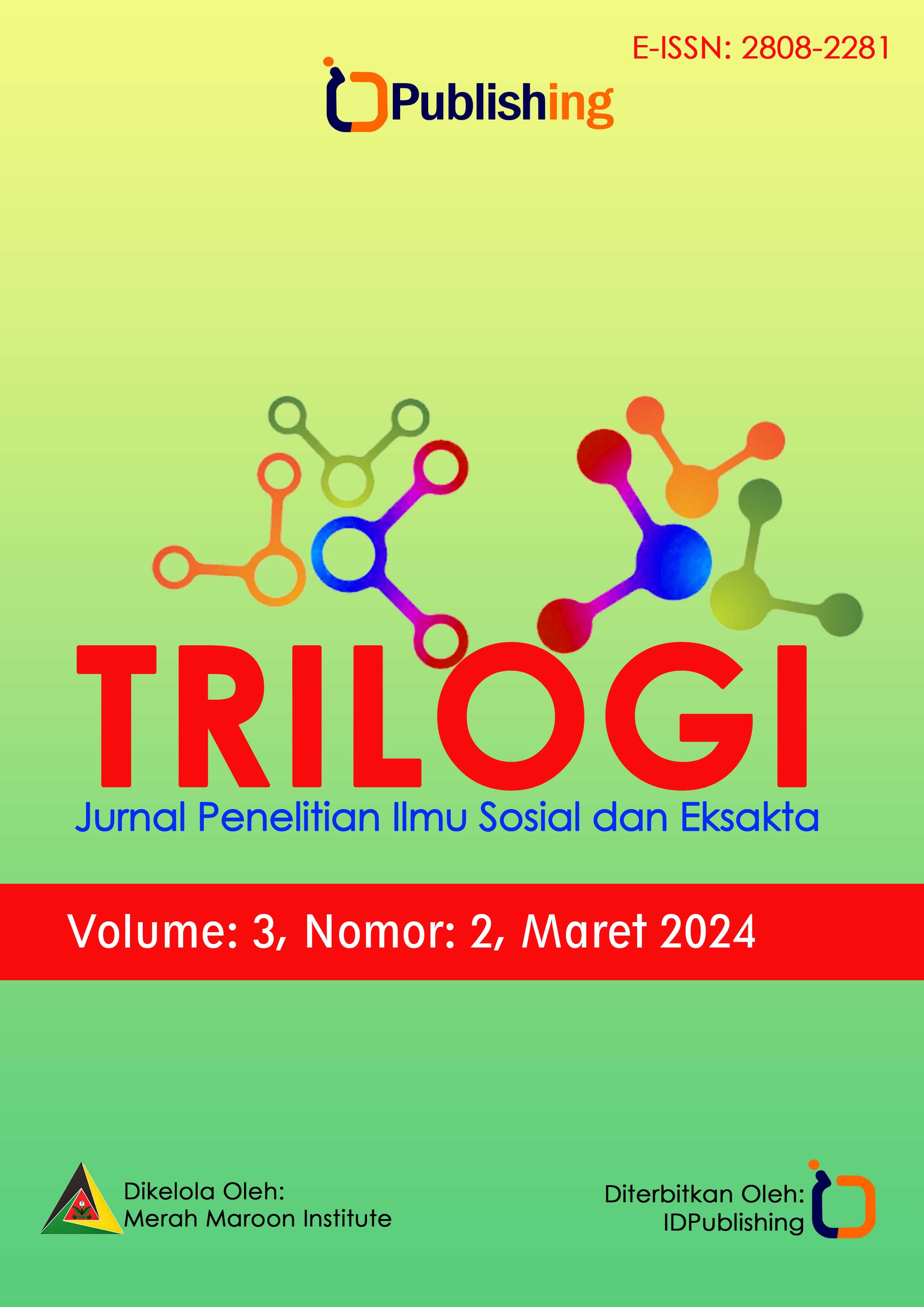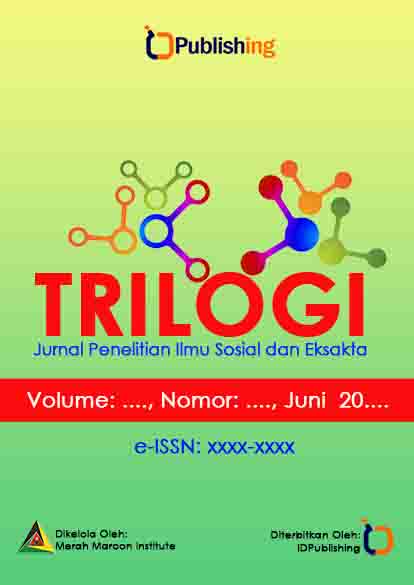Students’ Motivation in Learning English by Using Content Language Integrated Learning (CLIL) Approach in Management class Economic Faculty at Muhammadiyah University
DOI:
https://doi.org/10.47134/trilogi.v3i2.129Keywords:
CLIL, Learning English, Students’ MotivationAbstract
Content and Language Integrated Learning (CLIL) refers to a teaching and learning process where students learn other subjects such as physics or geography through a foreign language and also learn a foreign language through content-based subjects. This study was a classroom action research, which aims to increase students' motivation in learning English through the Content and Language Integrated Learning (CLIL) approach. Previous research at management class discovered that most the first -grade students were passive and needed more motivation to learn English. This research was conducted in collaboration with the English teacher who served as the study's observer. This study was divided into two cycles, each with two meetings. It was carried out over seven meetings, including a preliminary study and completing a questionnaire. According to observations, student participation in cycle 1 was 48.28% at the first meeting and 65.52% at the second. Meanwhile, student participation in Cycle 2 has increased. Student participation was 75.86% at the first meeting and 86.2% at the second. These findings indicate that student participation has met the study's success criteria, namely, 75% or more of the total number of students increased. In the first meeting, the student's participation was 75,86%, and in the second meeting was 86,2%. This result indicated that the student's participation had achieved this research's success criteria, more than 75% or more of the total number of students.
Downloads
References
Arikunto, S. (2020). Suatu Pendekatan Praktek (Research Procedure: A Practice Approach). PT Rineka Cipta.
Arulselvi, E. (2016). The effectiveness of Content-Based Instruction in English Language Teaching. Excellence in Education Journal, 5(2), 36–51. https://files.eric.ed.gov/fulltext/EJ1210158.pdf
Bell, J., & Waters, S. (2014). Doing Your Research Project: A Guide For First-Time Researchers. McGraw-Hill Education.
Cohen, L., Manion, L., & Morrison, K. (2007). Research Methods in Education (6th ed.). Routledge. https://doi.org/10.4324/9780203029053.
Coyle, D. (2013). Listening to learners: an investigation into ‗successful learning‘ across CLIL contexts. International Journal of Bilingual Education and Bilingualism, 16(3), 244–266. https://doi.org/https://doi.org/10.1080/13670050.2013.777384
Denman, J., Tanner, R., & De Graff, R. (2013). CLIL in junior vocational secondary education: Challenges and opportunities for teaching and learning. International Journal of Bilingual Education and Bilingualism, 16(3), 285–300. https://doi.org/10.1080/13670050.2013.777386
Doiz, A., Lasagabaster, D., & Sierra, J. M. (2014). CLIL and Motivation: the Effect of Individual and Contextual Variables. The Language Learning Journal, 42(2), 209–224. https://doi.org/https://doi.org/10.1080/09571736.2014.889508
Elliott, J. (1991). Action Research for Educational Change. Developing teachers and teaching (p. 163). https://books.google.com/books?id=TX5EBgAAQBAJ&pgis=1
Heras, A., & Lasagabastar, D. (2014). The Impact of CLIL on Affective Factors and Vocabulary Learning. Language Teaching Research, 19(1). https://doi.org/https://doi.org/10.1177/1362168814541736
Jones, B. D. (2009). Motivating Students to Engage in Learning : The MUSIC Model of Academic Motivation. International Journal of Teaching and Learning in Higher Education, 21(2), 272–285.
Lasagabaster, D. (2011). English Achievement and Student Motivation in CLIL and EFL settings. Innovation in Language Learning and Teaching, 5(1), 3–18. https://doi.org/https://doi.org/10.1080/17501229.2010.519030
McMillan, J. H. (1992). Educational Research: Fundamental for Consumers. Harper Collins Publisher.
Mede, E., & Çinar, S. (2019). Implementation of Content and Language Integrated Learning and Its Effects on Student Motivation. Latin American Journal of Content & Language Integrated Learning, 11(2), 215–235. https://doi.org/10.5294/laclil.2018.11.2.3
Navarro-Pablo, M., & García, E. (2018). Are CLIL Students More Motivated?: an Analysis of Affective Factors and Their Relation to Language Attainment. Porta Linguarum: Revista Internacional de Didáctica de Las Lenguas Extranjeras, 29(3), 71–90.
Pfenninger, S. (2016). All Good Things Come in Threes: Early English Learning, CLIL and Motivation in Switzerland. Cahiers de l‘ILSL, 48, 119–147. https://doi.org/10.26034/la.cdclsl.2016.429
Pladevall-Ballester, E. (2019). A longitudinal study of primary school EFL learning motivation in CLIL and non-CLIL settings. Language Teaching Research, 23(6). https://doi.org/https://doi.org/10.1177/1362168818765
Setyani, M. R., & Ismah, I. (2018). Analisis Tingkat Konsentrasi Belajar Siswa Dalam Proses Pembelajaran Matematika Ditinjau Dari Hasil Belajar. Seminar Nasional Pendidikan Matematika, 01, 73–84.
Sylven, L. K., & Thompson, A. S. (2015). Language Learning Motivation and CLIL: Is there a Connection? Journal of Immersion and Content-Based Language Education, 3(1). https://doi.org/10.1075/jicb.3.1.02syl
Tarja, N., & Moore, P. (2019). Exploring translanguaging in CLIL. International Journal of Bilingual Education and Bilingualism, 22(2), 237–249. https://doi.org/https://doi.org/10.1080/13670050.2016.1254151
Yang, W. (2015). Content and Language Integrated Learning Next in Asia: Evidence of Learners‘ Achievement in CLIL Education From a Taiwan Tertiary Degree Programme. International Journal of Bilingual Education and Bilingualism, 18(4), 361–382. https://doi.org/https://doi.org/10.1080/13670050.2014.904840
Downloads
Published
How to Cite
License
Copyright (c) 2024 Yayah Ikhda Nevia (Author)

This work is licensed under a Creative Commons Attribution 4.0 International License.








